
|
|
Manu National Park |
Aggressive trees – Egrets, Caiman and butterflies – Hot monkeys – Insects everywhere – Impact of tourism and accessibility. (Map this!)
With gigantic roots like sails, the kapok tree stands upright by reaching very far but not deep to search for nutrients in the top layer of the earth.
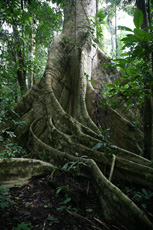 |
|
Buttress Roots |
The strangler fig embraces its host tree for support until its own roots are strong enough, then eventually strangles it. The “walking tree” has stilt like roots that actually allow it to move a few feet in search of precious nutrients. Some palms grow spines on their trunk to fend off animals while their fruit develop. These fall off later when the fruit are ripe and the tree is ready for pollination. Other trees host fire ants for protection and woe betide anyone who comes within (ant) jumping distance of the tree!
This is the Manu rain forest, a most remote area in Peru. It took us three days of traveling to get to the reserved zone open to tourists.
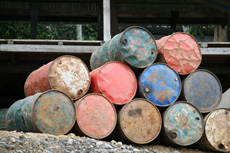 |
|
Gasoline at Boca Manu |
The only way in is via the Manu river. Here egrets, herons, macaws, vultures and other birds put on a display to delight any birder. The occasional capybara and caiman sightings add spice to the boat journey. Tranquil oxbow lakes in the reserved zone host odd birds like the colorful agami heron, the archaic looking hoatzin, the snail eating limpkin. When we bank the boat, dozens of butterflies rise into the air in a colorful display. Manu is also a butterfly watcher’s paradise.
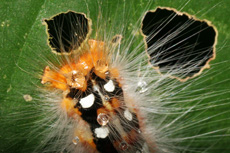 |
|
Caterpillar on trail |
Walks through the forest lead to encounters with woolly monkeys, red howlers, white capuchin and spider monkeys. What are the woolly monkeys doing in the hot rain forest? They must be so hot! They entertain themselves by rattling branches and throwing fruit down at us. We also invariably run into ants. Army ants forming a line two inches thick, fire ants protecting their host tree and the gigantic cobra ant from whom we keep a safe distance.
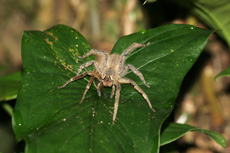 |
|
Wolf Spider |
Night walks yield a hidden world. Wolf spiders hide in leaves ready to spring on their prey, a tarantula hurriedly scurries away in the dark as our flashlights illuminate it, we find stick insects copulating and katydids molting. Of course, we get our share of bites, sand flies who are undeterred by 100% Deet, mosquitoes and other biting flies lurk when we shower or change clothes. We live in fear of the botfly, who sneaks in her eggs through a biting fly which then develop under the skin.
Most of Manu is not open for tourism, only a small section is. Services in that section are rustic, although some extremely expensive and fancy lodges do exist. Lodges are few and far between, one has to travel a minimum 5-6 hours a day by river to get to the next lodge. Flush toilets, hot water and 24 hour electricity are frowned upon, although most lodges offer one or more of these services. Manu is an eco touring destination which is trying hard to minimize impact by tourism.
 |
 |
 |
 |
|
Black skimmer |
Capybara |
Clearwing |
Insect or flower? |
These efforts are generally lauded by everyone. I definitely prefer seeing animals and birds in their natural setting from afar than in highly developed tourist areas where they can be seen artificially close. A cenote is nicer to bathe in than a swimming pool, a hummingbird visiting its flower delights more than one attracted to a feeder. This time however, traveling with my older in-laws, I realized how less developed areas can be inaccessible to many people. Only the younger and/or fitter people can see these natural wonders. Restricting development also restricts accessibility, shouldn’t everyone be able to delight in these wonderful places?
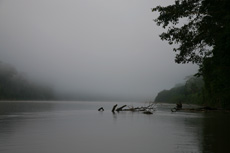 |
 |
|
Manu river |
Our transport |
For more pictures of Manu, click here.
“shouldn’t everyone be able to delight in these wonderful places?”
Answer: No.
There is a greater good. Should we ruin the “lungs of the earth” for tourism?
Fred,
Tourism is usually not the problem. Logging and illegal gold mining takes a much larger toll on the rainforest that some tourists tramping about.
Understood, and those behaviors tend to occur when there is extreme poverty.
Such beauty though…What a life you are having!
Katherine,
The rainforest displays extraordinary beauty and variety. On our trip we spotted 104 species of birds and innumerable insects. It is an amazing, but somewhat uncomfortable place – not many humans can live in a rainforest.
I love your photo of the buttress roots and wondered, provided I attribute this image to you and your website, if you would be kind enough to grant permission for me to use it under the CC BY-SA 3.0 license in a children’s book I am writing? I see it is currently reusable only under a CC BY-NC 3.0. I do hope you will be able to help but either way best wishes for your trip – it sounds wonderful. Kind regards,
Joan B-J